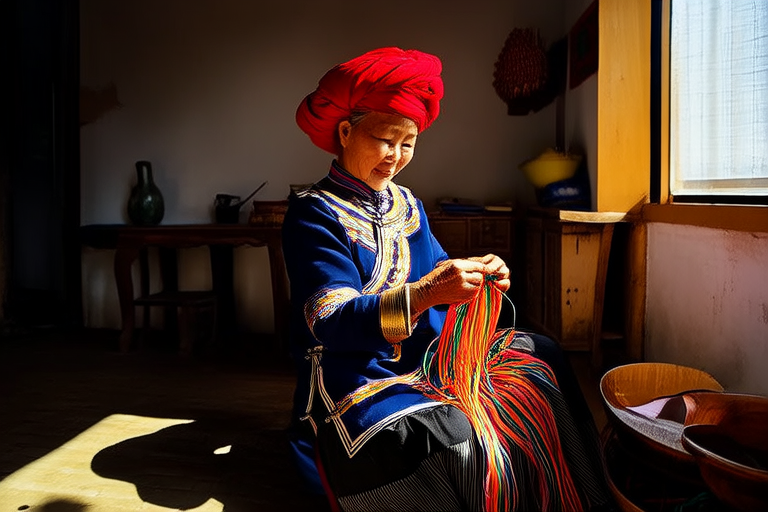Illuminating Traditions: A Journey Through World Customs

“`html
Illuminating Traditions: A Journey Through World Customs
Introduction
Cultural traditions are the threads that weave together the fabric of human society, offering a glimpse into the rich tapestry of human experience. These practices, whether grand festivals or subtle daily habits, serve as a window into the values, beliefs, and histories of diverse communities. From the vibrant colors of Diwali in India to the exuberant samba dancing of Carnival in Brazil, traditions are more than just celebrations; they are living testimonies to the resilience and creativity of humanity.
This article embarks on a journey through some of the world’s most fascinating customs and traditions, exploring their origins, evolution, and ongoing significance. By delving into festivals, rituals, and daily practices, we aim to illuminate the cultural richness that defines us all.
Festivals and Celebrations
Festivals are often the most visible expressions of a culture’s identity, bringing people together in joyous communal celebrations. One such festival is Diwali, the Festival of Lights, celebrated in India. Originating as a Hindu festival marking the victory of light over darkness and good over evil, Diwali has evolved into a national holiday that transcends religious boundaries. Families decorate their homes with colorful lights and rangolis, exchange gifts, and enjoy fireworks. The festival symbolizes hope and renewal, reflecting the Indian value of unity and harmony.
Another iconic celebration is Carnival in Brazil, known for its elaborate parades, music, and costumes. Rooted in Christian traditions, Carnival has become a secular event celebrating life, love, and freedom. Samba schools compete in vibrant parades, showcasing intricate floats and dancers in dazzling costumes. The festivities culminate in a massive street party, where everyone is invited to join in the revelry. This festival highlights Brazil’s cultural fusion of indigenous, African, and European influences.
Oktoberfest in Munich, Germany, is another famous festival, drawing millions of visitors annually. Originally a royal wedding celebration in 1810, it has grown into a 16-day extravaganza featuring traditional Bavarian food, beer, and music. Visitors don lederhosen and dirndls, partake in singing and dancing, and indulge in hearty meals. Oktoberfest reflects the German emphasis on community and hospitality, as well as a deep appreciation for culinary and brewing traditions.
These festivals not only entertain but also educate participants about the history and values of the host cultures. They serve as powerful tools for fostering intercultural understanding and promoting social cohesion.
Rituals and Ceremonies
Life-cycle rituals mark significant milestones in an individual’s journey, such as birth, marriage, and death. Weddings, for example, vary widely across cultures, each with its own unique customs and symbolism. In many Western cultures, weddings feature white dresses, flower bouquets, and vows exchanged under a canopy. In contrast, traditional Indian weddings involve elaborate rituals spanning several days, including haldi (turmeric paste application), mehendi (henna decoration), and baraat (groom’s procession). These ceremonies emphasize the importance of family, community, and spiritual connections.
Funeral rites also differ significantly between cultures. In Japan, funerals are somber affairs marked by Buddhist chants and rituals, while in Mexico, the Day of the Dead celebrates deceased loved ones with colorful altars, sugar skulls, and offerings of food and drink. Both traditions honor the dead and help the living cope with grief, though they do so in vastly different ways.
Coming-of-age ceremonies, such as the Bar Mitzvah in Judaism or the Quinceañera in Latin America, signify the transition from childhood to adulthood. These rites of passage teach young people about responsibility, respect, and their place within their communities. Over time, these rituals have adapted to modern contexts while retaining their core significance, ensuring that they remain relevant to new generations.
Through these rituals, societies pass down knowledge, values, and identities from one generation to the next, reinforcing shared cultural bonds.
Daily Practices and Beliefs
Everyday customs, such as greetings, dining etiquette, and gift-giving, reveal much about a culture’s values and social norms. In Japan, bowing is a common form of greeting, indicating respect and humility. Meals are often enjoyed communally, with guests waiting for the host to begin eating before starting themselves. In contrast, many Western cultures embrace casual greetings and individual servings at meals. These differences reflect varying attitudes toward hierarchy, privacy, and collectivism.
Gift-giving practices also vary widely. In China, red envelopes containing money are given during Lunar New Year to symbolize good fortune. In Europe, flowers are often presented to hosts upon arrival. Such customs demonstrate the importance of reciprocity and generosity within different cultural frameworks.
Superstitions and folklore play a significant role in daily life, influencing everything from clothing choices to household arrangements. For instance, breaking a mirror is said to bring seven years of bad luck in many Western cultures, while carrying a rabbit’s foot is believed to bring good luck. These beliefs often stem from ancient wisdom or religious teachings, serving as reminders of cultural heritage.
Personal stories can vividly illustrate the impact of these customs on individuals. For example, a traveler might recount how a simple gesture of respect during a visit to Japan transformed their perception of hospitality. Such anecdotes humanize cultural practices, making them relatable and memorable.
Conclusion
The customs and traditions explored in this article showcase the incredible diversity and richness of human experience. From grand festivals to subtle daily practices, each tradition offers valuable insights into the values, beliefs, and histories of its respective culture. By embracing and respecting these differences, we can foster greater understanding and appreciation among peoples worldwide.
As our world becomes increasingly interconnected, it is crucial to preserve cultural heritage and ensure that future generations continue to benefit from the wisdom and beauty of these traditions. Let us celebrate the uniqueness of each culture while recognizing our shared humanity.
In conclusion, let us embark on this journey with open hearts and minds, ready to learn and grow from the myriad traditions that make up our global tapestry.
“`